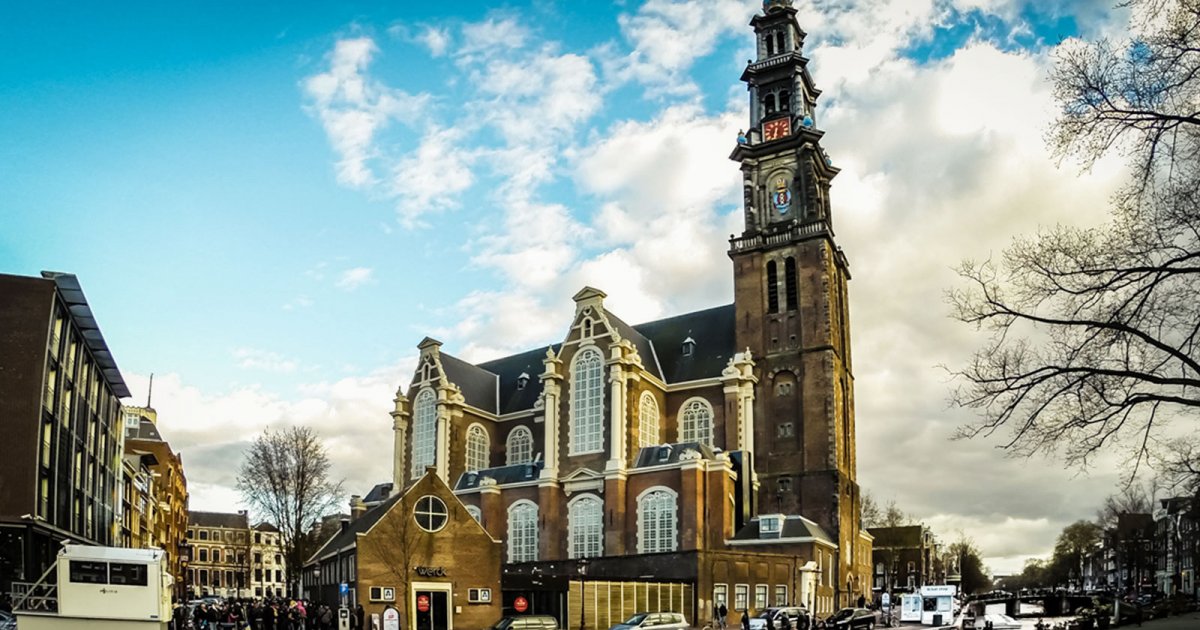ANNE FRANK HOUSE, Westerkerk
 Language: English / USA
Language: English / USA
The stretch of the Prinsengracht that the Anne Frank House looks onto is dominated by the high tower of the Westerkerk, or Western Church, the most important religious building from Amsterdam’s Golden Age.
The architect Hendrick de Keyzer, assisted by his son Pieter, was entrusted with the construction of large Calvinist churches at the compass points of the city, as part of the urban plan for Canal District.
The Westerkerk was built between 1620 and 1631, between the outer ring of the Prinsengracht and the working-class Jordaan neighborhood. The 85-meter-high bell tower is topped with a globe and the imperial crown, gifted by the Holy Roman Emperor Maximilian I. The balcony offers the finest views in the city over Amsterdam Old Town.
The beautiful exterior of the church, with red bricks alternating with light-colored stone, leads into an interior of absolute austerity, because the severe Calvinist doctrine shuns decoration of any kind: plenty of light floods in from the large windows, and the only embellishment inside the church is the magnificent organ, dating to 1682. The pews and seats all face the pulpit, instead of the altar, as in Catholic churches.
The Westerkerk looks out onto a beautiful, bustling square: among the old houses is the one where the philosopher and scientist Descartes lived in 1634.
Near the church, there is a poignant statue of Anne Frank and another monument recalling Nazi persecution: the Homomonument, the memorial dedicated to homosexuals who were deported to the concentration camps. The sculpture is composed of two triangles in pink granite, to evoke the pink star that homosexuals had to wear on their clothes to distinguish them.
Not far from here is the small, recently opened Tulipmuseum, dedicated to the history of tulips and documenting the origins, evolution and the variety of the bulbs and flowers that have become the symbol of the Netherlands.
An interesting fact: inside the Westerkerk there is a stone marker recalling the burial place of Rembrandt, who spent his last years in a little house in the adjoining Jordaan neighborhood. The location of the painter’s actual resting place is unknown, because he died in poverty and his body was tossed into the common grave of the cemetery next to the church.
Our visit to Anne Frank House ends here. MyWoWo would like to thank you - see you again at another Wonder of the World!



